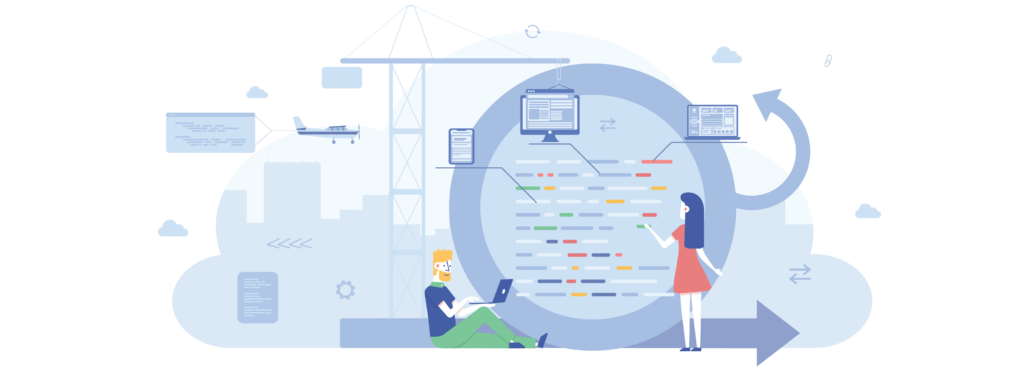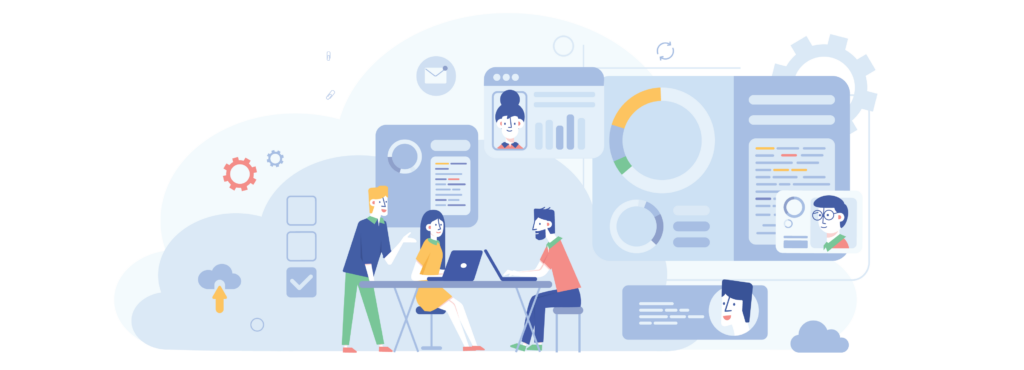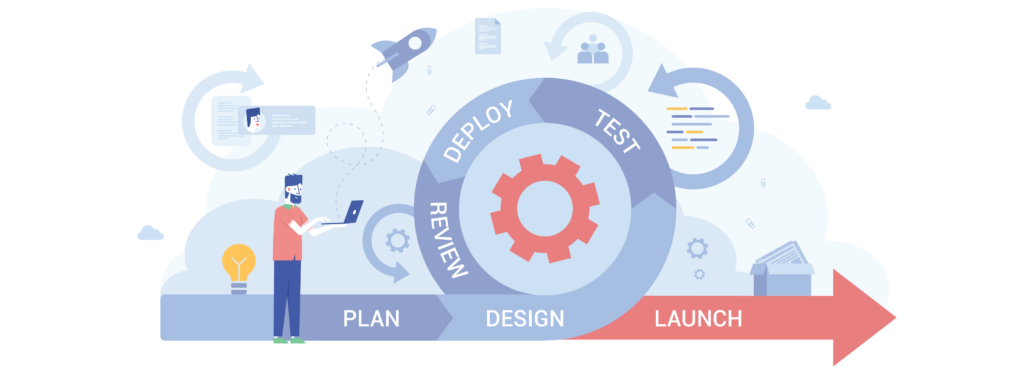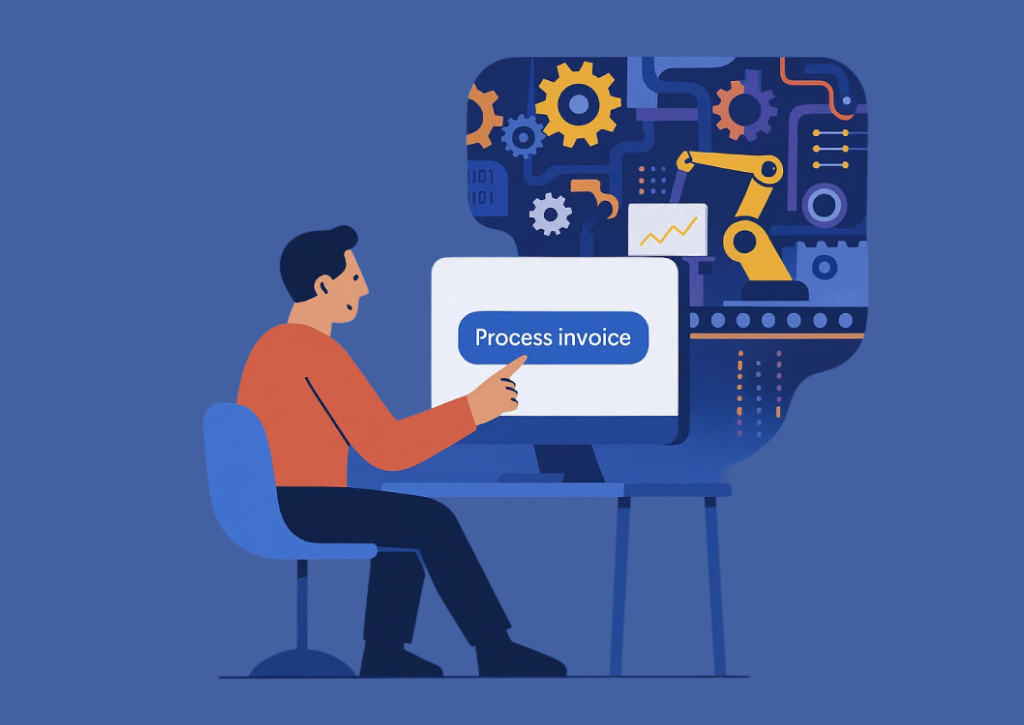Our Development Process
At Software Planet, we take great pride in our customer-centric application development process. This is why from start to finish, we aim to imbue a sense of partnership into everything we do at our company.
While our process is based on industry best practices and will incorporate the majority of elements of both Scrum and Agile methodologies, the final set of activities that are employed in the customer’s project will depend on a number of important variables:
- The type of services we are providing
- The type of project we are dealing with
- Our current model of engagement
As a company providing software development services for over twenty years, we have learned that rather than blindly following a “one-size-fits-all” approach, we can make small alterations to our development process that will better fit our customer’s requirements. This not only leads to improved results, but can also yield much higher levels of satisfaction.

Our Development Services
Software Planet Group are a bespoke software development provider. This means that in addition to a multitude of services, we also offer our customers a wide variety of customisation options. Every one of these, however, may be divided into two main categories:
- Team augmentation services
- End-to-end (E2E) delivery services

E2E Delivery
Different customers will want and require different levels of engagement in the project delivery process. Depending on the level of trust between the customer and supplier (as well as the customer’s corporate objectives and priorities), they may prefer to become less involved in the project’s day-to-day activities.
So with this in mind, in the end-to-end delivery model, the supplier takes full responsibility for the entire project, from ideation to project delivery. A good supplier will accordingly proactively inform the customer regarding progress, reaching out with any updates or when additional input from the client is needed.
Thus, from the customer’s perspective, the ideal E2E delivery process is very similar to a vending machine: you drop a coin in, the machine works its magic and you are given your selected treat.
In this way — though the level of customer involvement may vary — whenever you pay for tangible results (i.e. not simply for time or hours), you are in fact dealing with a variation of the end-to-end delivery model.
Software Planet’s expertise is often sought by customers who require software development for the following types of projects:
- Greenfield project development
- Legacy projects modernisation
- Migration projects

Greenfield Projects
As part of our desktop, mobile or web product development services, we stand ready to build your software projects from the ground up.
This may include the development of a minimum viable product (MVP) that will focus on your product’s core functionalities — though this is usually an interim step towards a larger project objective.
Legacy Projects
When software components become outdated, there are a number of different routes to tackle this problem:
- Continue work in the old mode by maintaining your old software
- Rewrite the whole system from scratch
- Use existing systems to build a new app over the old version
Migrations
IT migration projects will usually fall within one of the four main categories:
- Lift-and-shift or rehost, which involves moving a software solution from one platform to another without making any significant changes
- Refactor, or re-architect, which by contrast entails significant changes so an application can be run in a new environment.
- Replatform, which consists of a migration to a new environment that requires certain changes to the software solution, while being significantly less dramatic than a complete refactoring or rearchitecting
- Retire, or replace, where an application is abandoned in favour of another product, such as a SaaS (software-as-a-service) solution or another application.
Planning and Estimating
The first step in our development process is the planning and estimating phase, where multiple things occur. We create user stories, define our acceptance criteria and put together valuable estimates. We also make use of system metaphors.Time & Materials Contracts
Next, we draw up a highly flexible Time and Materials (T&M) contract. Under this model, because our customers only pay for our expertise and the work that they wish to complete, they are given the power to direct and scale development in any way they like.
Iterative Development
We work in one to two-week iterations known as Sprints. Each Sprint leads to a potentially shippable product — with fully working functionality — which in turn provides our customers with the freedom to decide whenever they are ready for their first official release.
Building Software
1. Sprint Planning
When development proper begins, the first thing we must do is define our Sprint goal. This spells out the main objective that our developers will be striving to meet in the current iteration. In order to define it, we invite our customers to a Sprint planning meeting, where our team members can then discuss your project’s iterative scope.
2. Demo Meetings
At the end of each iteration, we summon everyone together for a show of demonstrable updates. These demo meetings are a time to gauge overall progress, evaluate performance, compare original goals with what has actually been delivered and above all, receive critical feedback that will help us moving forward.
3. Retrospective
While our demo meetings are primarily geared towards customers, Sprint retrospectives are periodical reviews in which developers evaluate their achievements. In these events, we ask open-ended questions to reveal the root cause of our problems, and size up every aspect of development, from budget, to timeline, to goals.
4. Staging environment
To certify that no problems will arise after deployment, we may also make use of a staging environment. This closely mirrors our customer’s own in-house settings, enabling us to address a variety of different issues in load-balancing, security and scalability.
5. Graphic Design
We have found that the best way to work with designers is for all of the UI/UX work to be prepared a Sprint ahead of development. This makes planning an essential part of synchronisation for both designers and developers.
6. QA
And finally, in our Quality Assurance testing stage, we do everything in our power to guarantee the business value of your projects. Our teams unflaggingly scrutinise every aspect of your product’s development and determine if the users’ needs are being adequately met.
Read more about our development process:

How the Right Questions Define the Right Software
At Software Planet Group, we believe it starts with the wrong questions — or worse, none at all. In our latest article, we explore how thoughtful, context-aware questioning helps clients shape the right vision for their software systems. Whether you're in London, New York or Paris, the principle holds: the best contractors don't just estimate solutions — they uncover problems worth solving.

When Complexity Becomes Knowledge
The comforting idea that every experienced team will automatically build their next system “better” rarely holds true. Each project brings its own unique challenges — and with them, new forms of complexity.
